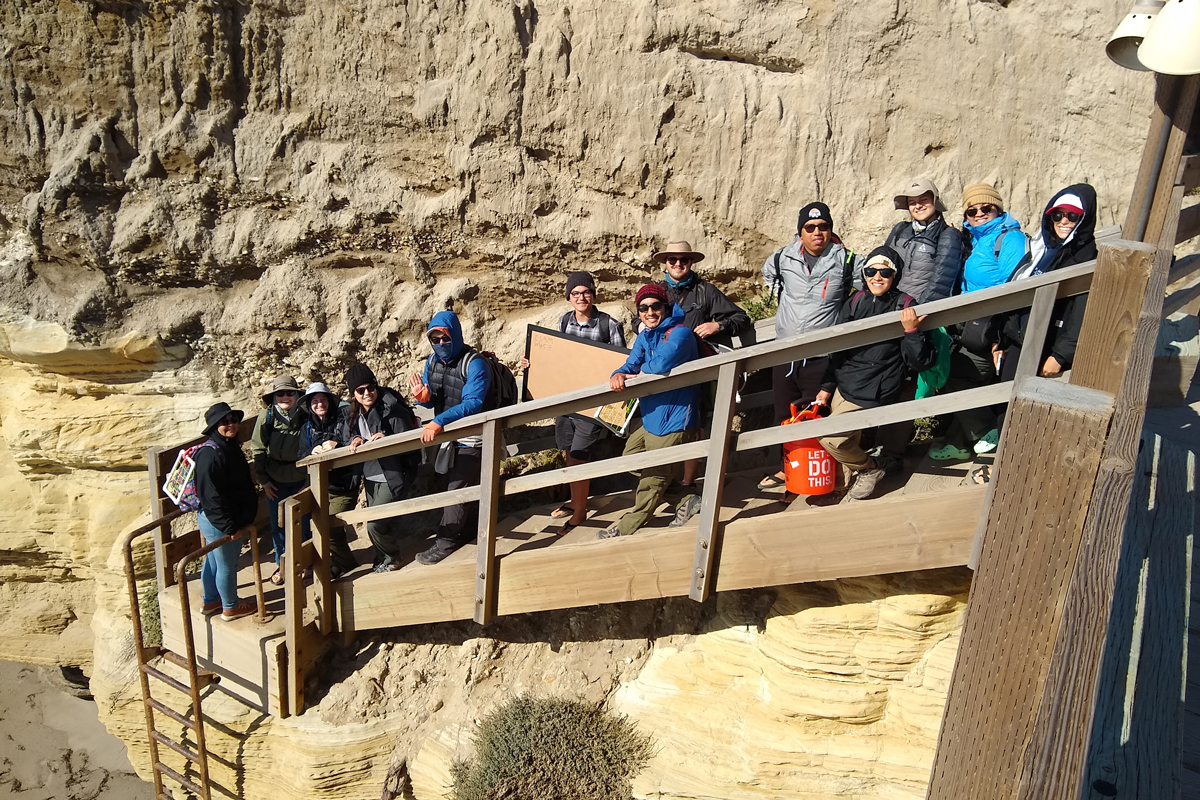Through its
Santa Rosa Island Research Station (SRIRS)—established through a partnership with Channel Islands National Park—CSU Channel Islands provided
two opportunities in summer 2022 for students to spend several weeks at the field station and experience hands-on learning on the island.
“A lot of our students are from traditionally underserved communities and are first-generation college students—and being able to spend time doing education and research in a national park on an offshore island is not necessarily in the cards for them," SRIRS Director Russell Bradley says. “We offer a variety of programs for them, but one element that we wanted to add with this program is the intensive field course. It's another level of opportunity for education, career preparation and research experience."
First, the interdisciplinary field studies program taught field methods and research in topics spanning environmental science to cultural history through lectures, field activities and hikes.
“It was the opportunity to travel and work in settings where there are remote field stations and where science is happening in a wet, muddy, hands-on way that was transformational for my career—and the opportunity to provide those experiences for our students in Channel Islands National Park is an enormous privilege," says Dan Reineman, Ph.D., assistant professor of Environmental Science and Resource Management, who helped lead the interdisciplinary session. “To live and work in the park, and learn research methods in biology, anthropology, ecology and resource management, over the course of weeks is an incredible opportunity for our student population."
One such field activity included observing a location on the island at the beginning of the trip and then again at the end to show how the students' new skills helped them perform more in-depth observations.
 CSUCI students in the Santa Rosa Island Research Station Summer Interdisciplinary Field Studies Program gather at the base of the pier in Becher's Bay on Santa Rosa Island.
CSUCI students in the Santa Rosa Island Research Station Summer Interdisciplinary Field Studies Program gather at the base of the pier in Becher's Bay on Santa Rosa Island.
“It was wonderful to look at the growth they could demonstrate in such a short time," Dr. Reineman says. “They acquired the skills to look differently at a place that they'd come to know by learning about the place, the species, the geological processes and the deep enriched history. It's a different lens through which to interpret, understand and appreciate the world."
The second program was a biology-focused field studies course concentrated on learning field methods in marine and terrestrial ecology, designing scientific questions and conducting research. Participating students developed their own primary research projects on the island and worked in groups to collect data, conduct experiments and analyze the data.
“This was really intensive, and the tests didn't always work," says Geoffrey Dilly, Ph.D., associate professor of biology and one of the program leaders. “The failure was part of the point, because the students got to see from the hypothesis testing and the methods building how a project actually comes to fruition."
The 2022 programs were supported by private funding and allowed students to earn class credit. SRIRS will resume intensive summer field courses in 2024 and continues offering its other, short-term programs.
Learn more about
research at the CSU.